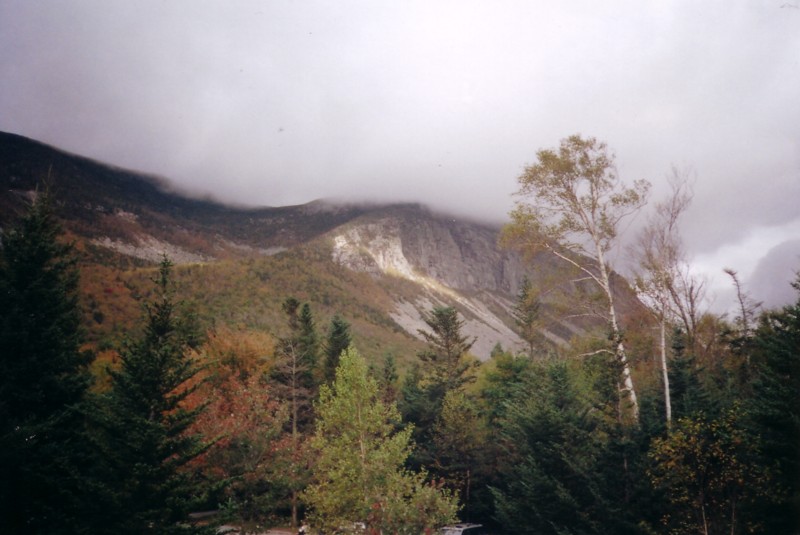Possibly one of the most scenic stretch of Interstate highway along the East Coast, The Franconia Notch Parkway -- which carries Interstate 93 -- is one of the last stretches of two lane Interstate in the country. After over two decades of controversy, it was decided that the route would best remain a two lane parkway through Franconia Notch State Park. The highway itself is extremely scenic as it passes the former site of the 'Old Man in The Mountain', the unique granite formation that served as the symbol of New Hampshire for decades.
 |
| Just north of Exit 33 the Parkway begins. |
 |
| Looking northbound along the two lane highway at the visitor's center. |
 |
| The site of the collapsed 'Old Man' from one of the vista points along the Parkway. |
In October 2003, I rode through the Notch not long after the Old Man rock formation collapse. In early May 2003, after a series of heavy rains, cold temperatures, and high winds, the 40 foot rock formation that poked out from Cannon Mountain collapsed and was no more.
 |
| Vista from the visitor center parking area - Exit 34A. |
The Franconia Notch Parkway is an amazing drive and really showcases the ruggedness and beauty of New Hampshire.
 |
| Low clouds cover the peaks Cannon Mountain (elevation 4180') |
All photos taken by post author - October 2003.
Further Reading:


Comments